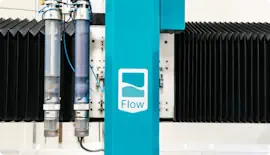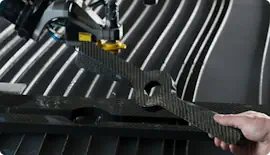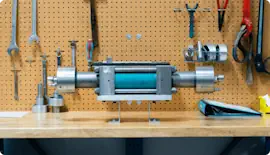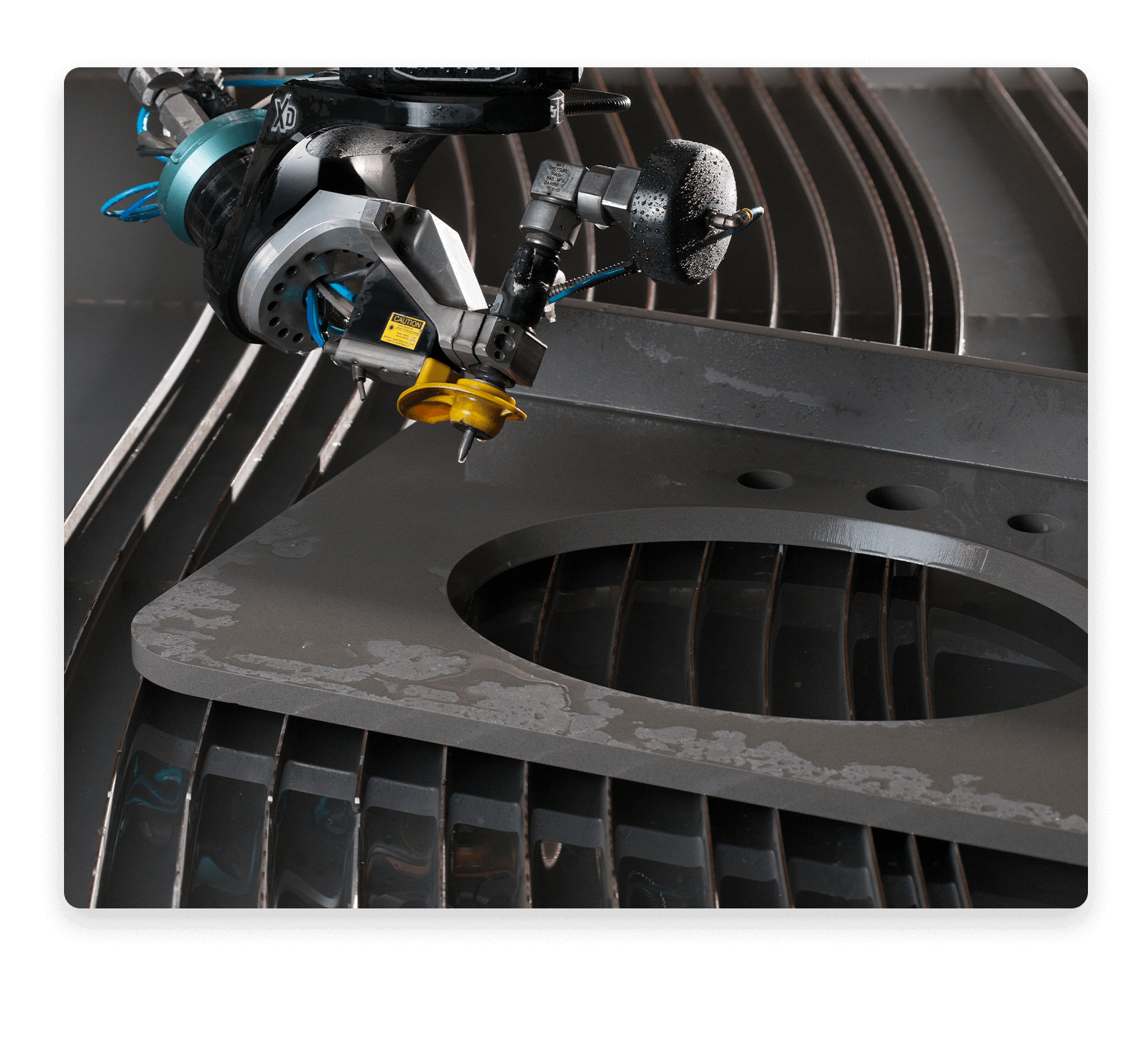
Cutting Stone & Tile with Waterjet
Whether you're cutting thick granite, marble, slate, limestone, soapstone, travertine, engineered stone, or any other material for floors and counters; stones, porcelain, or ceramic tile for artistic work such as inlays, signs, or medallions; or glass and metal for artistic accents and signage, the abrasive waterjet's unique ability to cut very intricate designs at high speed without breakage frees your imagination and expands your business. Compared to traditional cutting tools and CNC machines, easy-to-use Flow waterjets dramatically reduce work-in-process time for stone, glass and tile fabricators.Not sure a waterjet can handle your material?
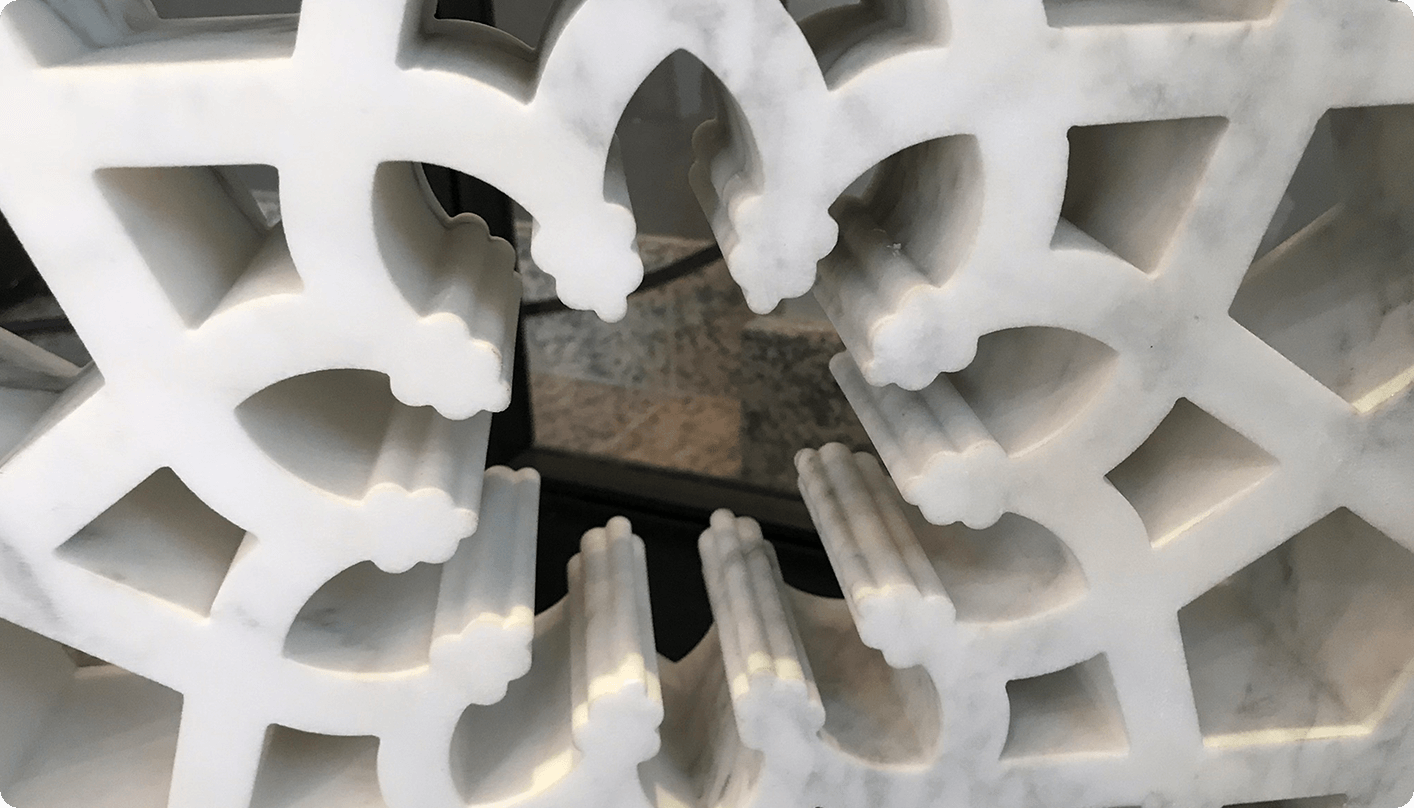
The Best Edge
The abrasive waterjet does not impart any heat or surface stress onto the stone or tile. Therefore, the material retains original appearance and strength.
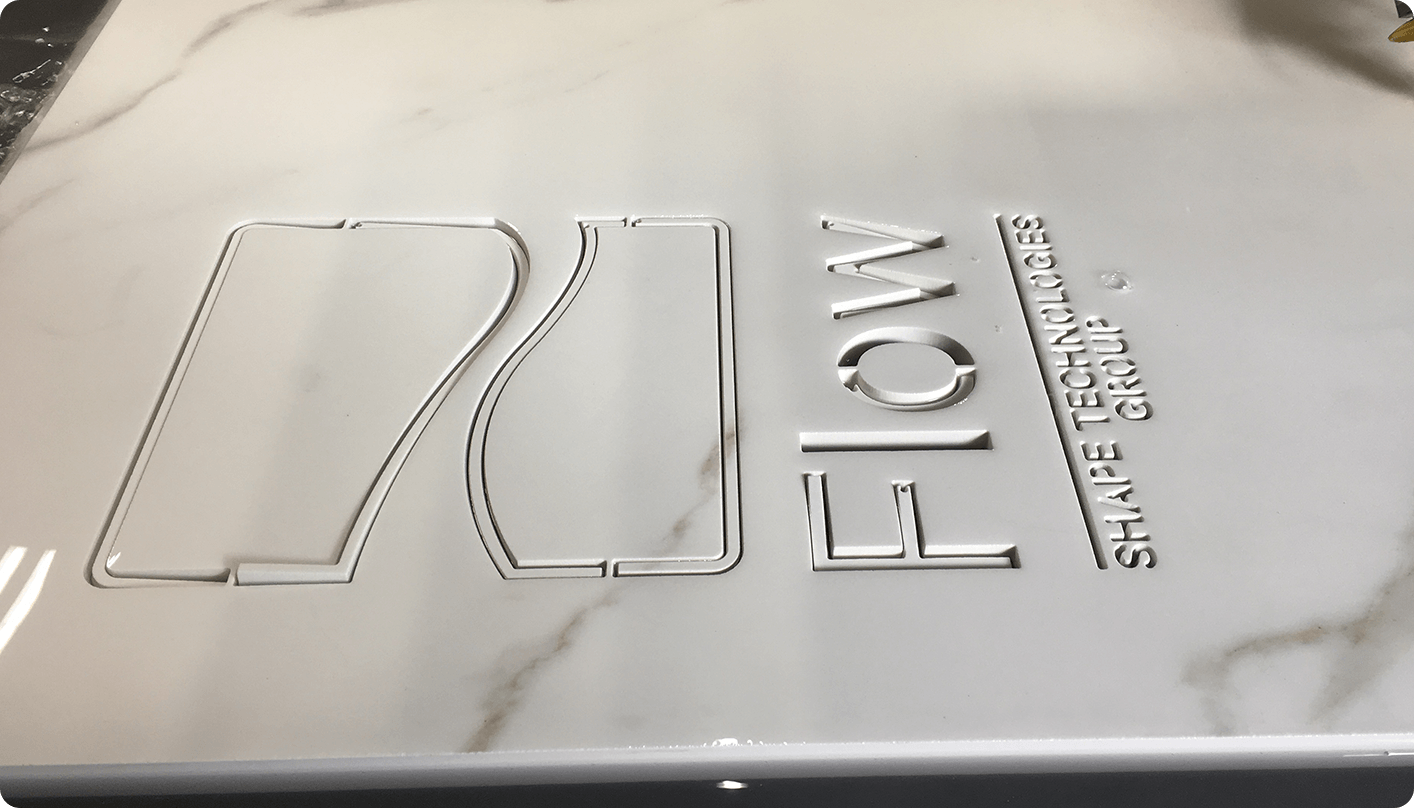
Minimal Kerfs
Compared to saws and CNCs, a waterjet's thin cutting width allows for nearly any design to be cut to perfection. With a waterjet it's easy to cut both sink and faucet holes and complex corners on edges of slabs. A waterjet improves material utilization, reduces costs, and boosts profits.

Key Benefits to Cutting Stone & Tile with Waterjet
- Increased productivity, fast cutting, and high-quality parts
- Minimal kerf for the most detailed and artistic patterns
- Raw material savings — reduced scrap
- Low operating cost — waterjet orifices and abrasive focusing nozzles require occasional replacement
- Omni-directional cutting, even at tight inside corners
- No need for extensive part clamping, minimal lateral or vertical forces
- Single-pass cutting, depending on material thickness
- Net or near-net cutting, little or no hand finishing
- Reduced tooling costs, lighter, flexible tooling
